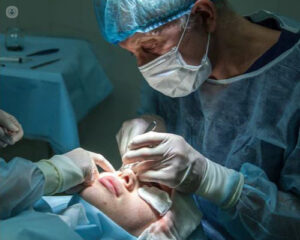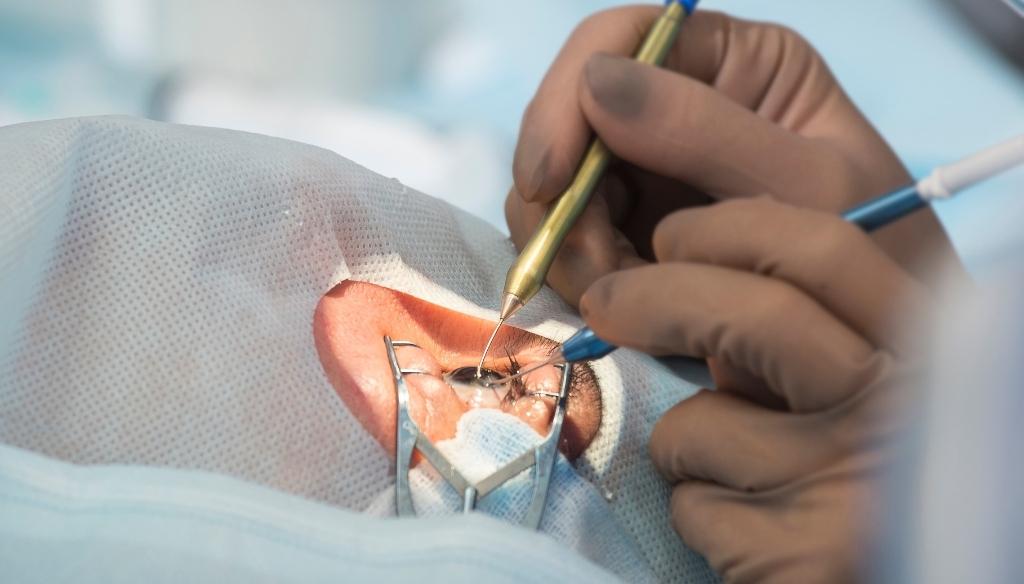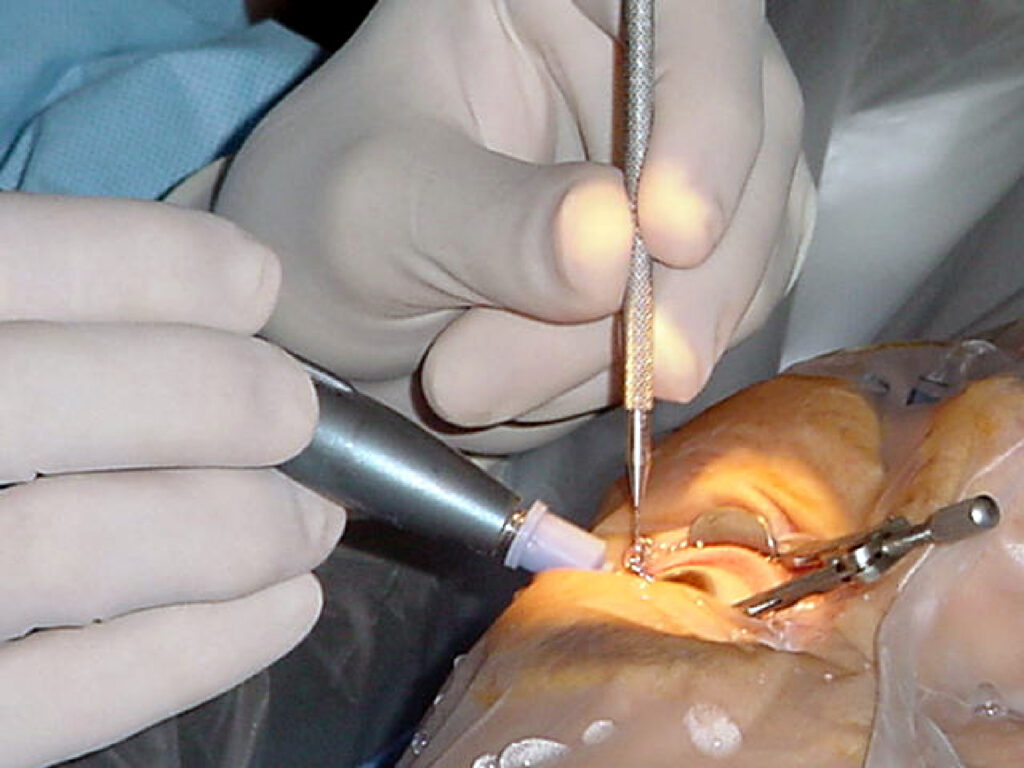Phacoemulsification, also known as small incision cataract surgery, is a type of cataract surgery that uses ultrasound to break up and remove the cloudy lens of the eye. It is considered to be one of the most common and successful surgical procedures performed today, with a 98% success rate. While it is a relatively safe and straightforward surgery, there are still some risks involved as with any type of surgery. In this blog post, we will take a detailed look at phacoemulsification, what it entails, the risks and benefits, and what you can expect before and after the surgery.
What is Phacoemulsification?

Phacoemulsification is a type of cataract surgery that uses ultrasound waves to break up and remove the cloudy lens from the eye. This surgery is often done on an outpatient basis, which means you won’t need to stay in the hospital overnight.
During phacoemulsification, your surgeon will make a small incision in your eye and then insert a tiny probe. This probe emits ultrasound waves that break up the lens so it can be suctioned out. The whole surgery usually takes less than 30 minutes.
After phacoemulsification, you will likely need to wear a protective shield over your eye for a few days. You may also need to use eye drops to help reduce inflammation and speed healing. Most people recover from this surgery without any problems and can see much better than they could before their cataracts developed.
This type of surgery is generally very safe, but as with any surgery, there are some risks involved. These risks include infection, bleeding, and damage to the eye. Your surgeon will discuss these risks with you before your surgery so that you can make an informed decision about whether or not phacoemulsification is right for you.
How is Phacoemulsification Performed?

The phacoemulsification procedure is typically performed under local anesthesia. The surgeon will make a small incision in the cornea and then use a tiny probe to break up the natural lens into small pieces. The artificial lens is then inserted into the eye and the incision is closed. The entire process, from start to finish, usually takes less than 30 minutes.
Most people report feeling very little discomfort during the phacoemulsification procedure. Some may experience a brief stinging sensation when the local anesthesia is first injected. There may also be some mild discomfort during the actual procedure, but this can usually be controlled with medication. In the entire procedure, the eye is only open for a few minutes at most.
After the phacoemulsification procedure, the eye will be covered with a patch or shield. It is important to keep the eye protected and to avoid rubbing it. The patch will need to be worn for 24 hours. During this time, it is important to avoid rubbing or touching the eye. Most people can resume their normal activities within a day or two after the procedure, but it is important to follow your surgeon’s instructions regarding activity level and follow-up care.
Who is a Candidate for Phacoemulsification?

Phacoemulsification is a type of cataract surgery that uses ultrasonic energy to break up and remove the cloudy lens of the eye. It is typically performed on an outpatient basis, and recovery is usually quick.
Most people who have cataracts are good candidates for phacoemulsification. In general, you may be a candidate for this surgery if:
-You are over the age of 40
One criterion for using this surgery is that the cataract must be mature enough. Phacoemulsification is not typically performed on people with very young cataracts. Sometimes, cataracts can form in children or young adults, but these cataracts are usually not mature enough to be removed with this type of surgery.
-Your cataracts are impacting your quality of life
An important factor in deciding if you are a candidate for phacoemulsification is how much your cataracts are impacting your quality of life. If your cataracts are causing problems with your vision that make it difficult to perform everyday tasks, or if they are causing you discomfort, you may be a good candidate for this surgery.
-You do not have any other serious eye conditions
Phacoemulsification is typically only performed on people who do not have any other serious eye conditions. This is because other eye conditions can complicate the surgery and make it more difficult to achieve successful results.
-Cost
An important factor to consider when deciding if you are a candidate for phacoemulsification is cost. This surgery is typically not covered by insurance, so you will need to pay for it out of pocket. The cost of the surgery can vary depending on the doctor and the location, but it is typically around 20000- 30000.
What are the Benefits of Phacoemulsification?
Phacoemulsification, also known as keyhole or laser surgery, is a type of cataract surgery. It is the most common type of cataract surgery performed in the United States. The surgeon makes a small incision in the eye and inserts a thin probe into the eye. The probe emits ultrasound waves that break up the cataract into small pieces. The surgeon then suctions out the pieces of the cataract.
There are several benefits of phacoemulsification over traditional cataract surgery:
1) Smaller incisions: Phacoemulsification requires smaller incisions than traditional cataract surgery. This results in less trauma to the eye and faster healing times. Sometimes, phacoemulsification can be performed without the need for stitches.
2) Less risk of complications: Phacoemulsification has a lower risk of complications than traditional cataract surgery. Complications from traditional cataract surgery can include retinal detachment, infection, and bleeding.
3) Faster healing times: Phacoemulsification usually results in faster healing times than traditional cataract surgery. Most people who have phacoemulsification surgery can return to their normal activities within a few days.
4) Reduced need for glasses: Phacoemulsification can often correct refractive errors, such as nearsightedness, farsightedness, and astigmatism. This means that people who have phacoemulsification surgery may not need to wear glasses or contact lenses after surgery.
5) Reduced risk of infection: Smaller incisions also mean a reduced risk of infection. Infection may also be less likely because the surgeon does not have to enter the eye as far during phacoemulsification.
6) Reduced risk of bleeding: Phacoemulsification involves less tissue damage than traditional cataract surgery. This can lead to a reduced risk of bleeding during and after surgery.
7) Better vision: Because phacoemulsification preserves more of the eye’s natural structure, patients often experience better vision after surgery than those who have traditional cataract surgery. A study published in the journal Ophthalmology found that patients who had phacoemulsification surgery had better vision than those who had traditional cataract surgery.
Are There Any Complications Associated with Phacoemulsification?

In short, complications from phacoemulsification are rare. This surgery is generally considered very safe. However, as with any surgery, there is always a risk of complications. The most common complication from phacoemulsification are:
Dry Eyes
One of the main reasons that people experience dry eyes after phacoemulsification is that the eye’s natural tears are not being produced as they normally would be. This can occur when the tear ducts become clogged or when the eyelids do not close properly. In some cases, dry eyes may also be caused by an underlying medical condition.
If you are experiencing dry eyes after your surgery, your doctor may recommend using artificial tears or ointments to help lubricate your eyes. In some cases, they may also suggest using a temporary plug to help prevent your tears from draining too quickly.
Cataract Recurrence
Although it is rare, cataracts can sometimes grow back after phacoemulsification surgery. This usually occurs when bits of the old lens capsule remains in the eye and begin to grow again. If this happens, you will likely need to have another surgery to remove the new cataract.
Infection
After any type of surgery, there is always a risk of infection. To help reduce this risk, your doctor will likely prescribe antibiotics to take before and after your phacoemulsification surgery. Additionally, it is important to keep your eye clean and free of debris to help reduce your risk of infection.
Retinal Detachment
In some cases, the retina may become detached after phacoemulsification surgery. This usually occurs when the eye is unable to produce enough vitreous humor and the retina begins to pull away from the back of the eye. If this occurs, you will likely need to have another surgery to reattach the retina.
Conclusion
Phacoemulsification is a type of surgery that is used to treat cataracts. This surgery involves breaking up the cataract using ultrasonic waves and then suctioning it out of the eye. Phacoemulsification is a relatively quick and painless procedure that can usually be done on an outpatient basis. If you have cataracts, talk to your doctor about whether phacoemulsification might be right for you.
You should now have a better understanding of what phacoemulsification is and how it is performed. You should also be aware of the benefits and risks associated with this surgery. If you have any questions, be sure to talk to your doctor.
Cataract surgery is a safe and painless procedure. At EyeMantra we have a team of experienced eye surgeons, who will be happy to answer any questions on cataract surgery, cataract surgery cost, cataract lens cost for different cataract surgery types- Phacoemulsification, MICS & Femto Laser Cataract. Call us at +91-9711116605 or email at [email protected] for inquiries.


